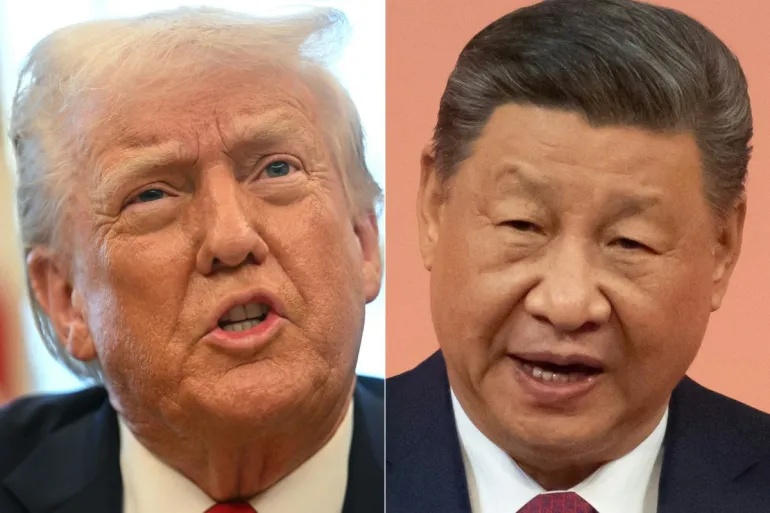How high tariffs on Canada, Mexico, and China are reshaping global trade and impacting consumers
President Donald Trump has once again shaken up global trade by imposing steep tariffs on key trading partners. In a dramatic move that took effect on March 4, 2025, the Trump administration slapped a 25% duty on imports from both Canada and Mexico—with a reduced 10% rate on Canadian energy products—while doubling tariffs on Chinese goods to 20%. The new measures, justified by national security concerns and the need to stem illegal drug flows (especially fentanyl), have sparked a fierce retaliatory response from affected nations and sent shockwaves through international markets.
Background: A Return to Protectionism
During his campaign, Trump repeatedly warned that unfair trade practices and a massive influx of illegal drugs were draining American prosperity. Now, leveraging his authority under national security statutes, he has followed through on those promises. By using tariffs as both a punitive and negotiating tool, his administration aims to force Canada, Mexico, and China to take more decisive action on issues like border security and drug trafficking—and to ultimately correct the U.S. trade imbalance.
What Happened: The New Tariff Announcements
-
- On Canada and Mexico:
The administration imposed a 25% tariff on most goods from these countries. However, to cushion the blow for energy-dependent industries, Canadian energy products face a 10% tariff. Trump defended his actions by stating that these measures are essential to stop the "flood" of fentanyl and illegal immigrants entering the United States. In a pointed message on social media, he declared there is "no room left" for further negotiations if these issues remain unaddressed.
- On Canada and Mexico:
-
On China:
The U.S. has doubled its tariffs on Chinese imports to 20%, up from an earlier 10%, aiming to pressure Beijing into curbing the supply of precursor chemicals linked to the fentanyl crisis.
According to an Aljazeera report these new tariffs mark the latest escalation in a long-running trade dispute that has already unsettled global markets.
Global Reactions and Retaliation
The swift response from America's trading partners has intensified the atmosphere of uncertainty.
-
Canada:
Prime Minister Justin Trudeau has vowed a strong retaliatory response by announcing plans to impose 25% tariffs on over US$100 billion worth of American goods. Trudeau emphasized that these measures are necessary to defend Canada’s economic interests and the longstanding bilateral relationship. -
Mexico:
Mexican President Claudia Sheinbaum has indicated that her government will enact a mix of tariff and non-tariff measures against U.S. imports, though detailed plans remain under wraps. -
China:
Beijing has not been silent either. In response to the increased tariffs, China has launched countermeasures—including additional tariffs on U.S. farm exports—and warned that it will file a formal complaint with the World Trade Organization for what it calls “unfair” practices.
Reuters noted that "these measures could upend nearly $2.2 trillion in two-way trade," reflecting the scale of economic disruption at stake
Economic Impact: What It Means for Consumers and Markets
The immediate effects of the new tariffs have been felt across global financial markets. Major U.S. indices tumbled following Trump’s announcement, and there are growing concerns that these policies will ultimately drive up prices for everyday goods—from automobiles and electronics to food and energy.
Industry experts warn that the tariffs could:
- Raise production costs for manufacturers with complex cross-border supply chains, particularly in the automotive sector.
- Increase consumer prices, potentially adding hundreds of dollars to household expenses as companies pass on higher costs.
- Disrupt global supply chains, forcing businesses to reconsider where to locate production facilities, which might ultimately lead to long-term shifts in manufacturing.
A report by the Associated Press highlights that China’s retaliatory tariffs on U.S. farm products could further strain American farmers, while critics argue that Trump’s strategy risks igniting a prolonged trade war that might offset any short-term gains in job creation or industrial investment.
Looking Ahead: Uncertain Times for Global Trade
Trump’s renewed tariff policy is a stark reminder of the volatility inherent in protectionist trade measures. While his administration insists that these tariffs will boost domestic manufacturing and lower tax burdens by generating significant federal revenue, many economists caution that the resulting trade war could lead to higher inflation and undermine global economic stability.
As negotiations and retaliatory actions continue to unfold, all eyes remain on the potential for de-escalation—or further tit-for-tat measures that could reshape the landscape of international trade for years to come.
Stay tuned for more updates as we continue to follow this evolving story.















0 Comments